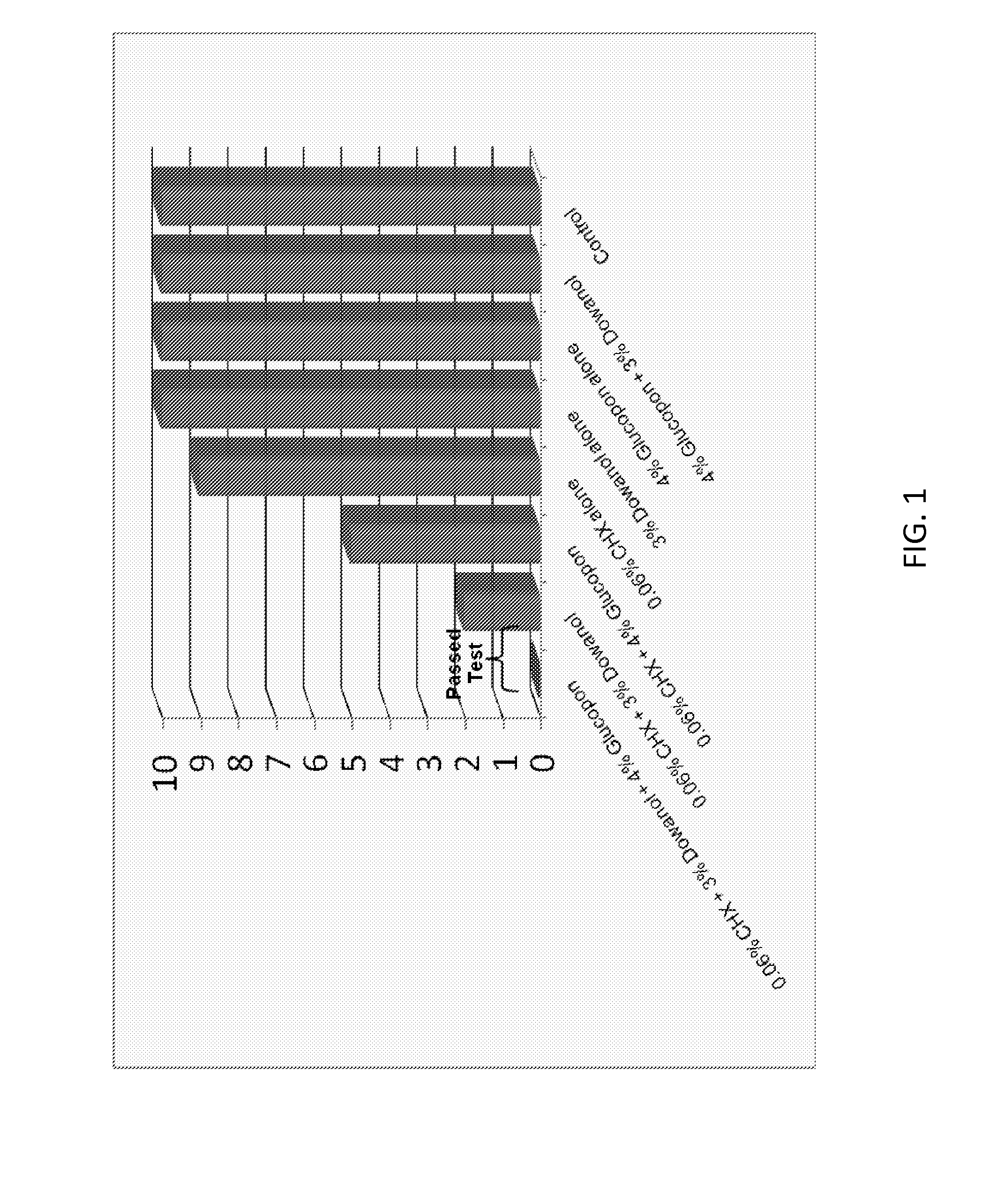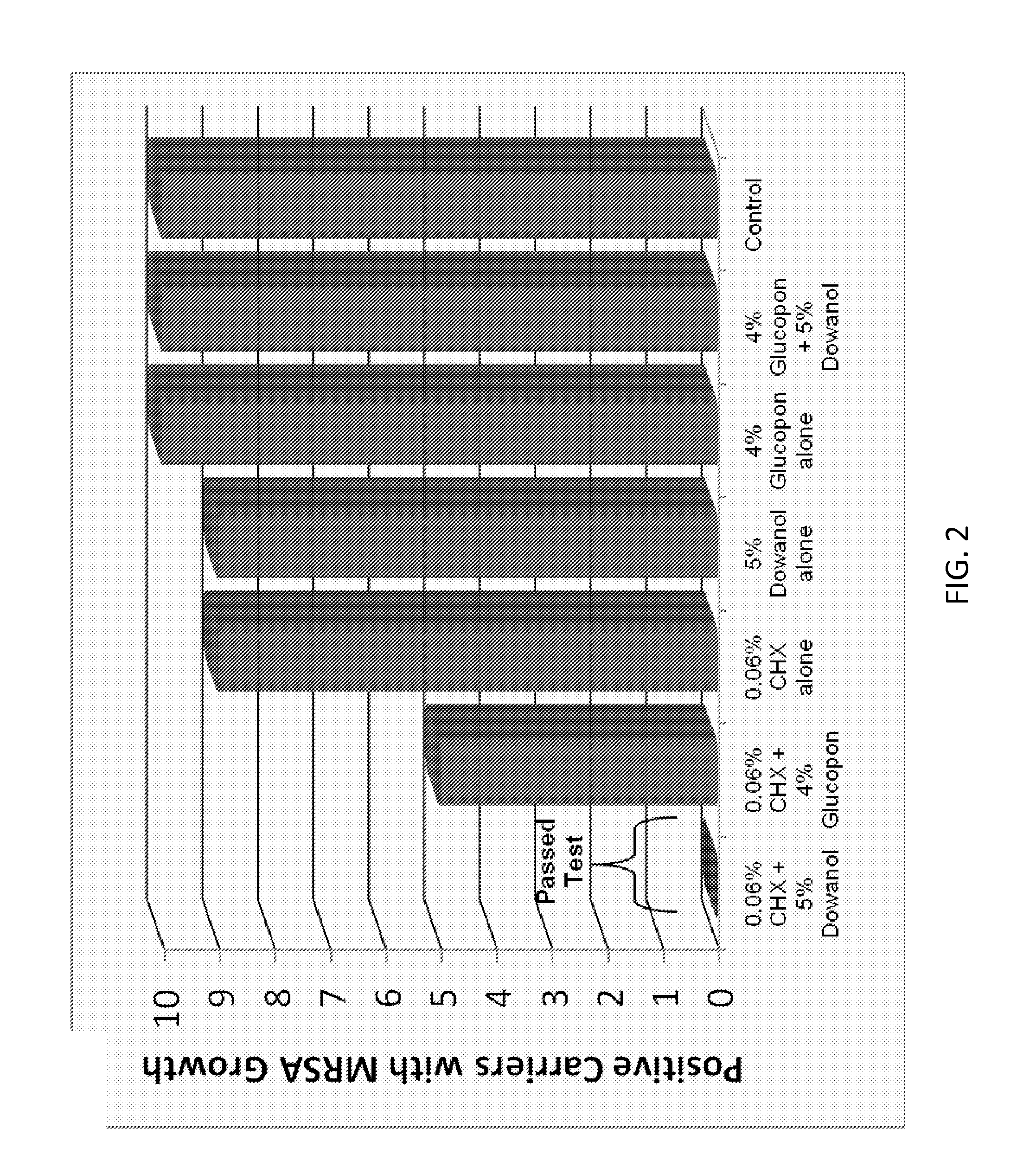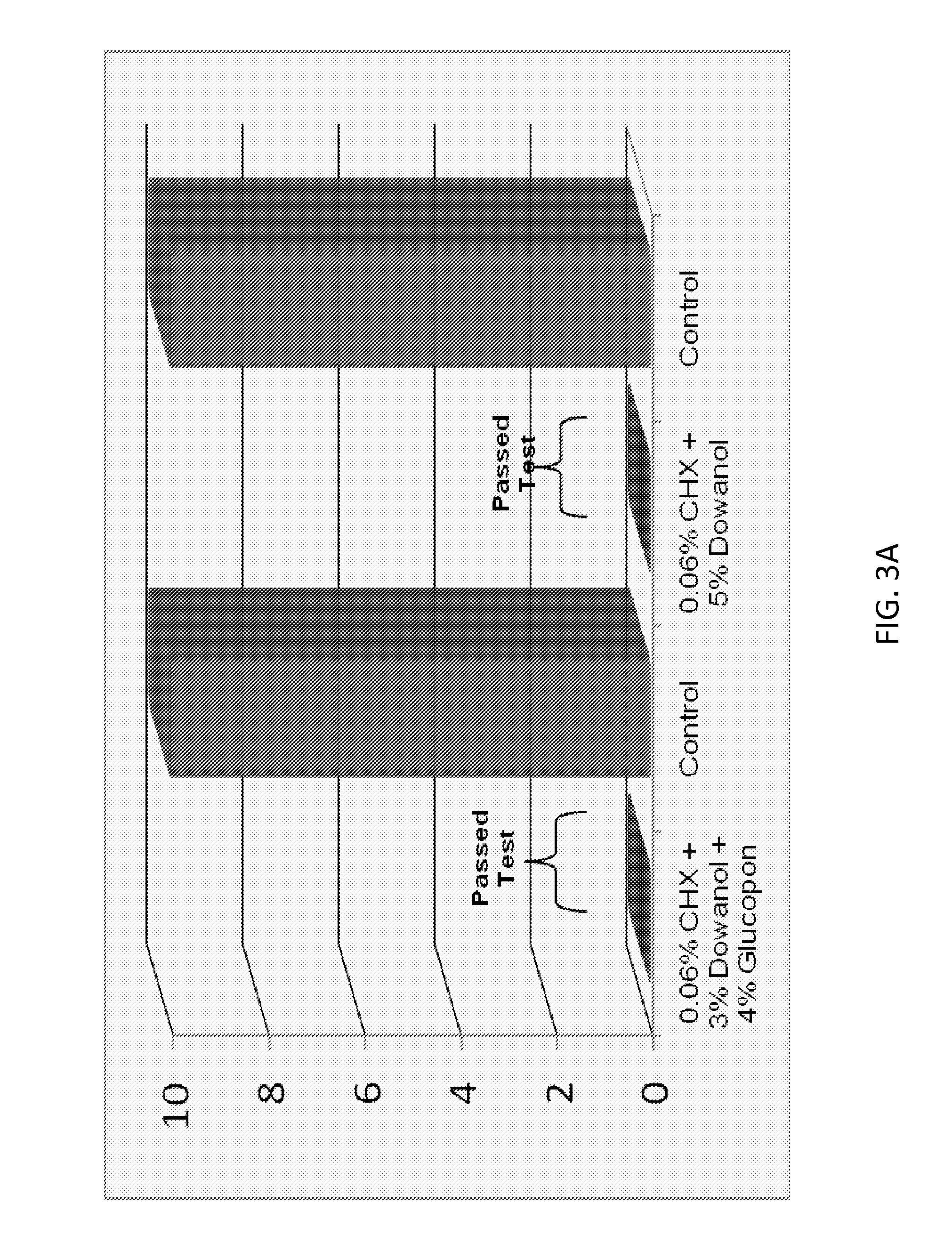Antimicrobial solutions
a technology of antimicrobial solutions and antimicrobial agents, which is applied in the field of medicine and microbiology, can solve the problems of low safety of current widely used chemical disinfectants, high toxicity of current widely used disinfectants, and inability to meet the needs of users, and achieves excellent surface tension lowering activity, high polymer plasticizing efficiency, and high latex film quality
- Summary
- Abstract
- Description
- Claims
- Application Information
AI Technical Summary
Benefits of technology
Problems solved by technology
Method used
Image
Examples
example 1
Modifications for Quantitative Germicidal Spray (Based on Quantitative Carrier Test SOP)
Methods
[0145]Using the standard method of testing that consists of a modification for the quantitative germicidal spray, which is based on quantitative carrier tests (SOP) that is outlined below, the inventor has compared the present invention disinfectant consisting of low concentration of chlorhexidine (0.06%), with any of the other biocide enhancers (Glucopon® or Dowanol®) to single components or compounds with chlorhexidine or Glucopon® or Dowanol® alone, including control. Below is a description of the modification for quantitative germicidal spray, which is the standard technique required by the Environmental Protection Agency (EPA).
Media / Supplies
[0146]Sterile 50 mL centrifuge tubes, pre-filled with 20 mL of desired neutralizer.
Carrier Preparation
[0147]Use 3″×1″ sterile glass containers. Place each carrier into a sterile Petri plastic dish.
Carrier Inoculation
[0148]1. Inoculate each carrier ...
example 2
Dowanol® as Bioenhancer of Chlorhexidine to Achieve a Rapid Kill Against MRSA
[0167]Current antiseptics and disinfectants (chlorine bleach, phenolics, and quaternary ammoniums) are associated with health risks to personnel and hazardous properties (flammable, volatile, corrosive, etc.). Recently, 2% chlorhexidine with 70% ethanol has been successfully used as a surgical antiseptic. Dowanol® is a glycol ether which is non volatile and could serve as an alternative to ethanol. In this study Dowanol® and Glucopon® (a non ionic surfactant) were examined as bioenhancers of chlorhexidine in achieving rapid kill of resistant bacteria and fungi. A modification of the quantitative germicidal spray (SOP method) was used for testing antiseptics and disinfectants whereby 10 slide carriers were inoculated with 105 (in 50% calf serum) of MRSA, VRE, multidrug-resistant (MDR) Acinetobacter (ACN), MDR Pseudomonas aeruginosa (PSA) and fluconazole-resistant Candida glabrata (CG), and then they were exp...
example 3
Efficacy of Antiseptic Environmental Solution Containing 0.5% CHG+3% CaEDTA+(5% or 10%) ETOH with or without 4% Glucopon
[0174]The present Example concerns determination of the optimal concentration of EtOH to be added to the antiseptic environmental solution and to determine whether the addition of 4% Glucopon® enhances this efficacy. Efficacy of various combinations of 0.5% chlorhexidine digluconate (CHG)+3% CaEDTA+5 or 10% EtOH with our without 4% Glucopon® were tested using a modification of the standard operating procedure (SOP) for quantitative evaluation of germicidal spray. Ten microscope slides were inoculated independently with 20 uL of 4 multidrug resistant (MDR) organisms at a concentration of 1×105 CFU / mL in 50% calf serum. Organisms tested include methicillin resistant Staphylococcus aureus (MRSA 4798), Vancomycin resistant entercocci (EN 3868), MDR-Pseudomonas aeruginosa (PS 4689), and Candida albicans. Slides were placed in covered sterile Petri dishes and dried at 37...
PUM
| Property | Measurement | Unit |
|---|---|---|
| dwell time | aaaaa | aaaaa |
| dwell time | aaaaa | aaaaa |
| exposure time | aaaaa | aaaaa |
Abstract
Description
Claims
Application Information
 Login to View More
Login to View More - R&D
- Intellectual Property
- Life Sciences
- Materials
- Tech Scout
- Unparalleled Data Quality
- Higher Quality Content
- 60% Fewer Hallucinations
Browse by: Latest US Patents, China's latest patents, Technical Efficacy Thesaurus, Application Domain, Technology Topic, Popular Technical Reports.
© 2025 PatSnap. All rights reserved.Legal|Privacy policy|Modern Slavery Act Transparency Statement|Sitemap|About US| Contact US: help@patsnap.com



